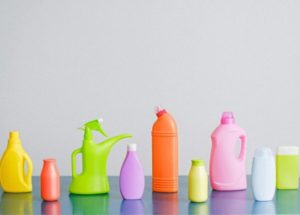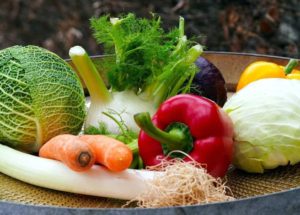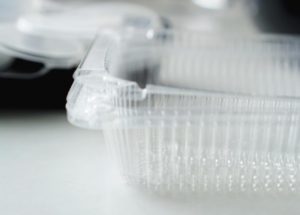May 08, 2025
PFAS in Food Packaging and Why You Can’t Afford to Ignore It
Forever chemicals (PFAS) have persisted in some packaging barriers, raising concerns over chemical migration into food. Use of PFAS-coated paper and fiber containers is declining, as brands move toward safer water- and oil-resistant alternatives. Testing, certification, and supply chain transparency are critical to ensure PFAS-free packaging. Innovative barrier solutions without PFAS — like bio-based coatings […]
Read More +
May 05, 2025
Your Food Packaging’s Impact on Environmental Sustainability
Environmental sustainability relies on smart packaging design, focusing on lightweight materials, recyclability, and lifecycle impact. Lightweight plastics reduce transport emissions, outperforming heavier options like glass or metal. Designing for recyclability — using mono-materials and clear labeling — boosts circularity and consumer participation. Full lifecycle thinking guides better choices: balancing resource use, end-of-life options, and food […]
Read More +
May 01, 2025
Why Your Food Business Can’t Afford to Stay Wrapped in Paper
Choosing between plastic or paper means weighing cost, performance, and sustainability trade-offs — paper is often pricier and less protective for fresh foods. Plastic offers superior barrier protection, reducing spoilage and food waste compared to paper wraps. Paper may lead to higher packaging and handling costs, and often lacks moisture resistance. Hybrid approaches (plastic lined […]
Read More +
Apr 28, 2025
Warning Signs When Selecting A Food Packaging Supplier
Packaging supplier warning signs include missing certifications, poor quality control, and resistance to audits, all of which signal misaligned priorities. Lack of traceability and inconsistent product quality across lots can lead to costly recalls or production delays. Unresponsive customer service or unclear ownership structure often means you won’t get support when issues arise. Proactive vetting […]
Read More +
Apr 24, 2025
The Bioplastics Gamble: Why Food Companies Need to Think Twice
Bioplastics in food packaging seem eco-friendly, but they often need special composting facilities and don’t always meet shelf-life or performance needs. Conversion challenges exist, including cost premiums, supply uncertainty, and uncertain end-of-life effectiveness. Some bioplastics still rely on food crops, raising sustainability and ethical concerns. Brands benefit by fully vetting bioplastic claims, testing performance, and […]
Read More +
Apr 21, 2025
Find Out Why Some Foods Degrade Faster Than Others in Packaging
Foods degrade faster based on packaging interaction — moisture, oxygen, and light exposure directly influence spoilage rates. Product-specific traits (pH, water activity, enzyme levels) dictate how quickly fresher foods break down. Tailored packaging solutions — like barrier films and MAP — help slow degradation for sensitive foods. Storage conditions matter: temperature, humidity, and light control […]
Read More +
Apr 17, 2025
Microplastics and Food Packaging: Separating Fact from Fiction
The amount of microplastics in packaging that sheds into food is very low, with most migration coming from environmental sources instead. Most microplastic concerns stem from broader pollution, like washing synthetic clothes or tire abrasion, not packaged foods. Material choice and design matter: smoother surfaces and high-quality films reduce potential particle release. Transparent testing and […]
Read More +
Apr 14, 2025
How Automation May Be the Key Ingredient to Your Food Business’s Success
Consider automation when repetitive tasks or labor bottlenecks start slowing production or inflating costs. It improves consistency and reduces errors, especially in packing, sealing, or labeling lines. Initial investment pays off through lower labor costs, faster output, and better scalability. Support systems — staff training and maintenance — are key to ensure long-term performance and […]
Read More +
Apr 10, 2025
Greenwashing Alert: The Truth About Plastic Food Packaging
Greenwashing of plastic food packaging occurs when brands promote eco-friendly claims without real environmental improvements. Misleading terms like “eco,” “green,” or “plant-based” often mask non-recyclable or virgin plastic content. Transparency and third-party verification are essential — things like clear resin codes, PCR content, and certs matter. Real progress requires measurable outcomes, such as increased recycling […]
Read More +
Apr 07, 2025
PET vs. Polypropylene: The Wrong Choice Can Cost You
Differences between PET & polypropylene hinge on clarity, barrier strength, and heat resistance — PET is clearer and more rigid, while PP handles heat and chemicals better. PET is best for visibility, making it ideal for display packaging and cold applications. PP is microwave-safe and more flexible, perfect for reheatable or hot-fill products. Choose based […]
Read More +











